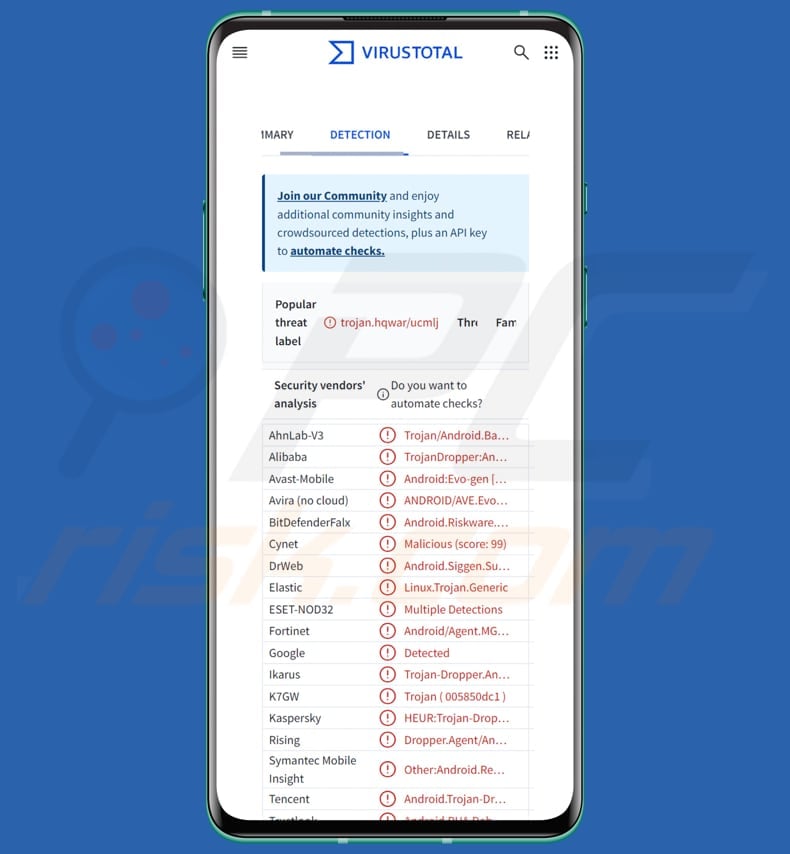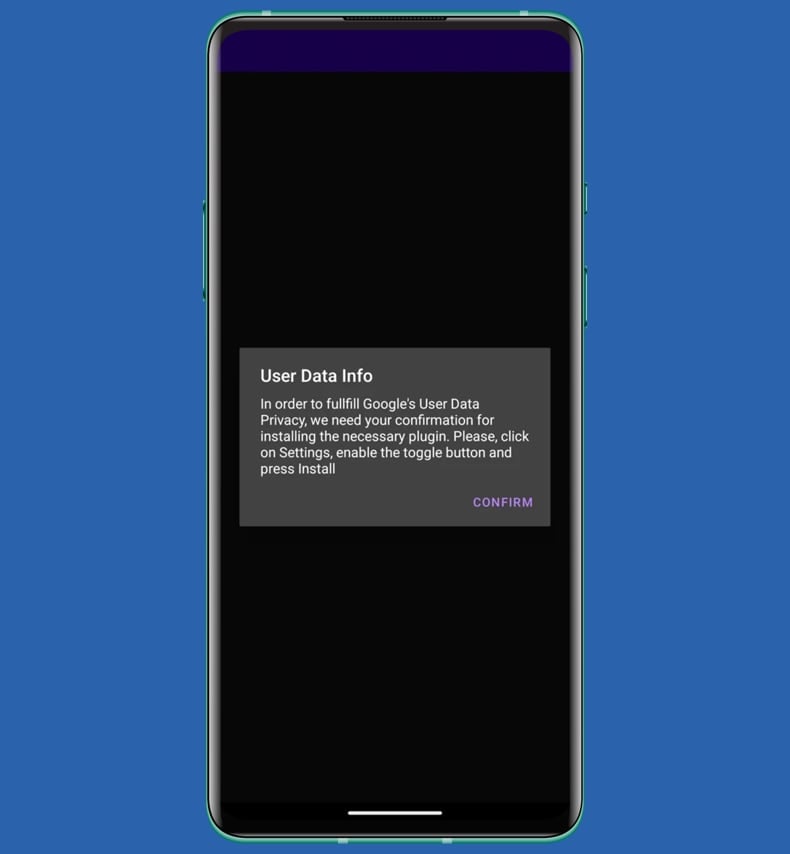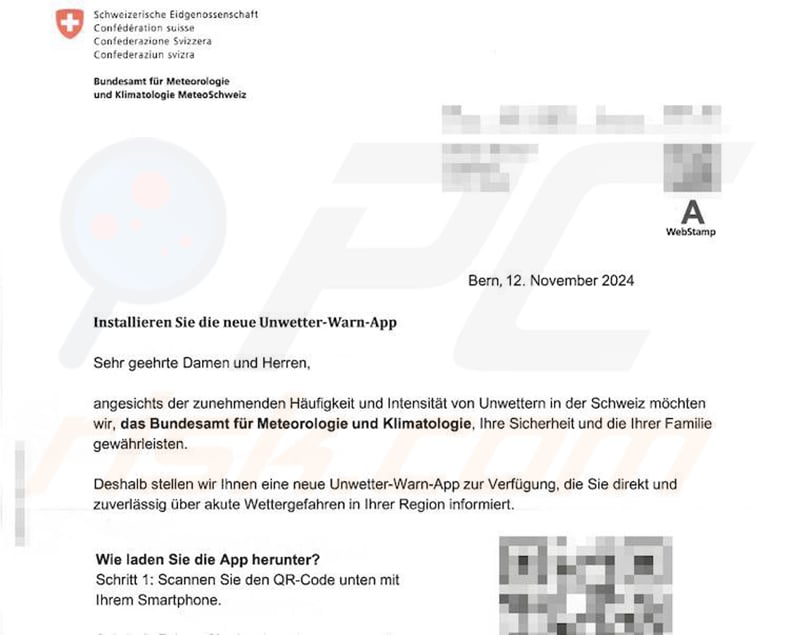Get free scan and check if your device is infected.
Remove it nowTo use full-featured product, you have to purchase a license for Combo Cleaner. Seven days free trial available. Combo Cleaner is owned and operated by RCS LT, the parent company of PCRisk.com.
What kind of malware is Octo2?
Octo2 is a new version of the Octo banking Trojan targeting Android users. Compared to the old version, the Octo2 includes improved RAT capabilities and anti-analysis and anti-detection techniques. If there is a reason to suspect that a device is infected with Octo2, a scan using a reputable security tool should be run as soon as possible.

Octo2 overview
The original Octo version allows cybercriminals to commit on-device fraud by initiating transactions. It can capture screen contents (in real time), conduct overlay attacks on banking apps, and log keystrokes, enabling attackers to obtain sensitive information.
The new Octo2 version has improved remote access features, making the connection more stable and faster during remote sessions. It allows attackers to reduce the amount of data sent over the Internet to the command center (C2). This setting helps maintain a stable connection even on slow networks by lowering the quality of screenshots.
Also, Octo has been known for its advanced anti-analysis and anti-detection techniques. In Octo2, the developers improved the obfuscation process. They added steps that decrypt and dynamically load a native library responsible for handling the payload and generating encryption keys and C2 domain names.
Additionally, Octo2 uses a Domain Generation Algorithm (DGA) to create the C2 server name, allowing cybercriminals to quickly change domain names without regenerating the malware. This allows threat actors to avoid server takedowns and blocklists.
It is also worth noting that Octo2 can get a list of apps to monitor and block push notifications from, which helps the operators focus on specific targets more effectively.
| Name | Octo2 Banking Trojan |
| Threat Type | Android malware, Banking Trojan, Remote Access Trojan |
| Detection Names | Avast-Mobile (Android:Evo-gen [Trj]), Combo Cleaner (Android.Riskware.Marcher.aFK), ESET-NOD32 (Multiple Detections), Kingsoft (Android.Troj.TrojanDroppe.MGV), Full List (VirusTotal) |
| Symptoms | The device is running slow, system settings are modified without user's permission, questionable applications appear, data and battery usage is increased significantly, browsers redirect to questionable websites, intrusive advertisements are delivered. |
| Distribution methods | Fake applications, unofficial websites, third-party app stores. |
| Damage | Stolen personal information, decreased device performance, battery is drained quickly, decreased Internet speed, huge data losses, monetary losses, stolen identity. |
| Malware Removal (Windows) |
To eliminate possible malware infections, scan your computer with legitimate antivirus software. Our security researchers recommend using Combo Cleaner. Download Combo CleanerTo use full-featured product, you have to purchase a license for Combo Cleaner. 7 days free trial available. Combo Cleaner is owned and operated by RCS LT, the parent company of PCRisk.com. |
Conclusion
In conclusion, the Octo2 variant is a dangerous threat to banking security. With improved remote access and obfuscation techniques, it poses a heightened risk to users. It is important to be cautious and adopt robust security measures to protect against threats like Octo2.
Some examples of other mobile malware targeting Android users are Necro, Ajina, and SpyAgent.
How did Octo2 infiltrate my device?
Threat actors have been spotted distributing Octo2 by disguising it as popular applications like Google Chrome, NordVPN, and Enterprise Europe Network. Octo2 employs the Zombinder service to embed the malicious payload into these APKs, effectively evading security measures on Android 13 and later versions.
When users launch Zombinder, it prompts them to install an additional "plugin" which is actually the Octo2 malware.
How to avoid installation of malware?
Download apps and files from official websites and app stores (and read user reviews before installing). Be skeptical when encountering suspicious pop-ups, ads, links, or buttons on dubious sites. Always scrutinize unexpected or unfamiliar emails and messages before clicking links or opening attachments. Regularly update the operating system.
Use trusted antivirus or anti-malware software and make sure it has the latest updates.
Screenshot of a request from Zombinder to confirm the installation of Octo2 (source: threatfabric.com):

Example of a spam email containing a QR code that leads to Octo2 trojan, source: Dominic Alvieri:

Screenshot of a fake DeepSeek website (deepsekk[.]sbs) spreading Octo2 trojan:
![Fake DeepSeek download website (deepsekk[.]sbs) used to spread Octo2 trojan](/images/stories/screenshots202502/octo2-trojan-android-update-2025-02-03-fake-deepseek-website2.jpg)
Quick menu:
- Introduction
- How to delete browsing history from the Chrome web browser?
- How to disable browser notifications in the Chrome web browser?
- How to reset the Chrome web browser?
- How to delete browsing history from the Firefox web browser?
- How to disable browser notifications in the Firefox web browser?
- How to reset the Firefox web browser?
- How to uninstall potentially unwanted and/or malicious applications?
- How to boot the Android device in "Safe Mode"?
- How to check the battery usage of various applications?
- How to check the data usage of various applications?
- How to install the latest software updates?
- How to reset the system to its default state?
- How to disable applications that have administrator privileges?
Delete browsing history from the Chrome web browser:

Tap the "Menu" button (three dots on the right-upper corner of the screen) and select "History" in the opened dropdown menu.

Tap "Clear browsing data", select "ADVANCED" tab, choose the time range and data types you want to delete and tap "Clear data".
Disable browser notifications in the Chrome web browser:

Tap the "Menu" button (three dots on the right-upper corner of the screen) and select "Settings" in the opened dropdown menu.

Scroll down until you see "Site settings" option and tap it. Scroll down until you see "Notifications" option and tap it.

Find the websites that deliver browser notifications, tap on them and click "Clear & reset". This will remove permissions granted for these websites to deliver notifications. However, once you visit the same site again, it may ask for a permission again. You can choose whether to give these permissions or not (if you choose to decline the website will go to "Blocked" section and will no longer ask you for the permission).
Reset the Chrome web browser:

Go to "Settings", scroll down until you see "Apps" and tap it.

Scroll down until you find "Chrome" application, select it and tap "Storage" option.

Tap "MANAGE STORAGE", then "CLEAR ALL DATA" and confirm the action by taping "OK". Note that resetting the browser will eliminate all data stored within. This means that all saved logins/passwords, browsing history, non-default settings and other data will be deleted. You will also have to re-login into all websites as well.
Delete browsing history from the Firefox web browser:

Tap the "Menu" button (three dots on the right-upper corner of the screen) and select "History" in the opened dropdown menu.

Scroll down until you see "Clear private data" and tap it. Select data types you want to remove and tap "CLEAR DATA".
Disable browser notifications in the Firefox web browser:

Visit the website that is delivering browser notifications, tap the icon displayed on the left of URL bar (the icon will not necessarily be a "Lock") and select "Edit Site Settings".

In the opened pop-up opt-in the "Notifications" option and tap "CLEAR".
Reset the Firefox web browser:

Go to "Settings", scroll down until you see "Apps" and tap it.

Scroll down until you find "Firefox" application, select it and tap "Storage" option.

Tap "CLEAR DATA" and confirm the action by taping "DELETE". Note that resetting the browser will eliminate all data stored within. This means that all saved logins/passwords, browsing history, non-default settings and other data will be deleted. You will also have to re-login into all websites as well.
Uninstall potentially unwanted and/or malicious applications:

Go to "Settings", scroll down until you see "Apps" and tap it.

Scroll down until you see a potentially unwanted and/or malicious application, select it and tap "Uninstall". If, for some reason, you are unable to remove the selected app (e.g., you are prompted with an error message), you should try using the "Safe Mode".
Boot the Android device in "Safe Mode":
The "Safe Mode" in Android operating system temporarily disables all third-party applications from running. Using this mode is a good way to diagnose and solve various issues (e.g., remove malicious applications that prevent users you from doing so when the device is running "normally").

Push the "Power" button and hold it until you see the "Power off" screen. Tap the "Power off" icon and hold it. After a few seconds the "Safe Mode" option will appear and you'll be able run it by restarting the device.
Check the battery usage of various applications:

Go to "Settings", scroll down until you see "Device maintenance" and tap it.

Tap "Battery" and check the usage of each application. Legitimate/genuine applications are designed to use as low energy as possible in order to provide the best user experience and to save power. Therefore, high battery usage may indicate that the application is malicious.
Check the data usage of various applications:

Go to "Settings", scroll down until you see "Connections" and tap it.

Scroll down until you see "Data usage" and select this option. As with battery, legitimate/genuine applications are designed to minimize data usage as much as possible. This means that huge data usage may indicate presence of malicious application. Note that some malicious applications might be designed to operate when the device is connected to wireless network only. For this reason, you should check both Mobile and Wi-Fi data usage.

If you find an application that uses a lot of data even though you never use it, then we strongly advise you to uninstall it as soon as possible.
Install the latest software updates:
Keeping the software up-to-date is a good practice when it comes to device safety. The device manufacturers are continually releasing various security patches and Android updates in order to fix errors and bugs that can be abused by cyber criminals. An outdated system is way more vulnerable, which is why you should always be sure that your device's software is up-to-date.

Go to "Settings", scroll down until you see "Software update" and tap it.

Tap "Download updates manually" and check if there are any updates available. If so, install them immediately. We also recommend to enable the "Download updates automatically" option - it will enable the system to notify you once an update is released and/or install it automatically.
Reset the system to its default state:
Performing a "Factory Reset" is a good way to remove all unwanted applications, restore system's settings to default and clean the device in general. However, you must keep in mind that all data within the device will be deleted, including photos, video/audio files, phone numbers (stored within the device, not the SIM card), SMS messages, and so forth. In other words, the device will be restored to its primal state.
You can also restore the basic system settings and/or simply network settings as well.

Go to "Settings", scroll down until you see "About phone" and tap it.

Scroll down until you see "Reset" and tap it. Now choose the action you want to perform:
"Reset settings" - restore all system settings to default;
"Reset network settings" - restore all network-related settings to default;
"Factory data reset" - reset the entire system and completely delete all stored data;
Disable applications that have administrator privileges:
If a malicious application gets administrator-level privileges it can seriously damage the system. To keep the device as safe as possible you should always check what apps have such privileges and disable the ones that shouldn't.

Go to "Settings", scroll down until you see "Lock screen and security" and tap it.

Scroll down until you see "Other security settings", tap it and then tap "Device admin apps".

Identify applications that should not have administrator privileges, tap them and then tap "DEACTIVATE".
Frequently Asked Questions (FAQ)
My device is infected with Octo2, should I format my storage device to get rid of it?
Formatting your storage device can help get rid of malware, but it should only be considered as a last option, as formatting erases all data. It is advisable to use reliable antivirus or anti-malware software to try to remove Octo2.
What are the biggest issues that malware can cause?
The damage caused by malware can differ depending on its functions. Typical outcomes of malware attacks include identity theft, financial losses, the potential for further infections, loss of data, and a decline in device performance.
What is the purpose of Octo2?
Octo2 enables cybercriminals to capture what’s displayed on the screen in real time, perform overlay attacks on banking applications, and record keystrokes, allowing attackers to access sensitive information.
How did Octo2 infiltrate my device?
Threat actors are distributing Octo2 by masking it as popular apps like Google Chrome, NordVPN, and Enterprise Europe Network. The malware uses the Zombinder service to embed its payload into APKs. When users open Zombinder, they are prompted to install an additional "plugin", which is the Octo2 malware.
Will Combo Cleaner protect me from malware?
Yes, Combo Cleaner can identify and eliminate almost all known malware infections. However, since advanced malware often hides deep within the system, it is advisable to perform a full system scan.
Share:

Tomas Meskauskas
Expert security researcher, professional malware analyst
I am passionate about computer security and technology. I have an experience of over 10 years working in various companies related to computer technical issue solving and Internet security. I have been working as an author and editor for pcrisk.com since 2010. Follow me on Twitter and LinkedIn to stay informed about the latest online security threats.
PCrisk security portal is brought by a company RCS LT.
Joined forces of security researchers help educate computer users about the latest online security threats. More information about the company RCS LT.
Our malware removal guides are free. However, if you want to support us you can send us a donation.
DonatePCrisk security portal is brought by a company RCS LT.
Joined forces of security researchers help educate computer users about the latest online security threats. More information about the company RCS LT.
Our malware removal guides are free. However, if you want to support us you can send us a donation.
Donate
▼ Show Discussion